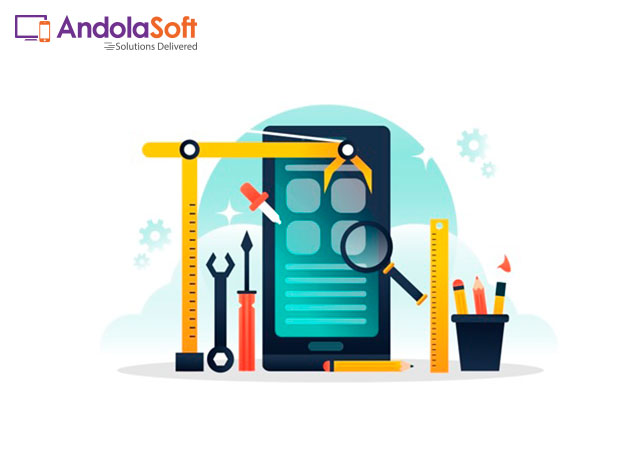The Covid-19 pandemic is a really difficult time for all. It has triggered a panic button all over the world as a medical emergency, disrupting the global economy and hitting businesses hard in the area of operation and survival.
The consequences such as social distancing, lockdowns, low production/demand, lack of labor, and a high degree of uncertainty, have questioned their continuity.
But digital technology has helped pandemic hit businesses to keep up and running like least affected.
Thankfully, many tech companies are promptly offering next-level digital technology to keep their businesses operational even amidst the crisis.
As the need for digital infrastructure has grown for businesses during this emergency, solutions like custom app development and cloud computing have proven beyond useful.
A Reality Check for Businesses
From retail, healthcare, and finance industries to grocery, apparel, and salon, every industry has to quickly adapt to the new situation; to serve their customers safely and fast.
They have to consider options of virtual contacts, eCommerce tools, and technologies to respond to this crisis-ridden situation in a better way. These drastic changes in business sectors are long-term.
Pandemic and Contribution of Tech Stacks
Businesses are left with no option but to digitize all or some part of their activities to protect customers and employees put under travel restrictions due to the pandemic.
Some of the tech stacks have already confirmed that they are getting a record number of requests for the implementation of remote work and digital services across multiple domains.
Again, shopper behaviors and ways of interactions have changed considerably, and the demand for digital technology is likely to continue in the future.
Nearly around 75% of shoppers are using digital platforms for the first time.
Web and mobile app development companies have to make sure that the approaching businesses are digital-ready and don’t miss a single customer in this unstable condition.
Recent data from McKinsey (Source: Covid-19 US Digital Sentiment Survey) shows the accelerated rate of digital adoption among US businesses and customers in different industries.
(Source – mckinsey.com)
Challenges and Digital Adoption in the Press
The Covid-19 pandemic has thrown many challenges at businesses – the most important being the company management and financial stability, thus making business resiliency and continuity their ultimate priority.
There are a few other areas where businesses are facing challenges such as reducing operation costs, maintaining data security, etc.
Digital technology helps pandemics have a low impact on businesses by taking their eCommerce development to the cloud platform and automating the whole business from supply chain to sales management.
Digital Transformation to Address Pain Points
Digital technology is a savior for businesses in the pre-Covid19 and post Covid19 era. It is not just a good to have a feature – but a necessity for companies to weather the effects of the pandemic.
And as businesses now come to consult with tech companies more and more, they are seen struggling in the following areas:
- Deploying remote staff
- Reaching out to customers virtually
- Remote access to business activities and details
- Adding to agility and competence
- Stay safe against new cybersecurity related issues
- Cutting down operational costs and improving supply chain activity
While businesses are undergoing organizational, cultural, and social change, tech companies have been providing the required support to help them cope up with it gradually.
Restructured Traditional Business Model
Empowering businesses digitally is not all about facilitating remote access; they will have to be available 24/7 online taking/processing orders and addressing issues that employees are facing on the personal/professional front.
Digital technology has successfully removed in-person client meetings and customers are no doubt experiencing an increased speed of response in the digital framework.
Companies are now able to build excellent virtual customer contacts that could be easily shifted to core business activity post-crisis.
The insecurity triggered by the Covid-19 crisis is encouraging businesses to review their IT infrastructure and make sure that they work on the limitations there to work remotely.
Businesses are now more versatile in the area of decision making and seen enjoying new customer engagements and conversations than before.
Effect of Digital Transformation
Digital transformation is the key to overcoming the pandemic and helping businesses get robust and resilient for the future.
To start with, many companies have sped up the adoption of digital technology and tools that will quickly connect with their workers, clients, and partners safely, without making huge investments.
New-age digital solutions like SaaS, Cloud, Data Security, and Automation have come together to make businesses pandemic-proof.
Digital Implementation in Full Glory
With work from home now becoming a standard, the importance of cloud service has grown more.
And so far, you may have seen many businesses move to comprehensive WFH mode without any disturbance – thanks in real life to SaaS and cloud solutions providers, which are offering cost-effective packages.
Hundreds of custom app developments have been carried out to connect home bound businesses to collaborative/management tools for their continuity.
Similarly, web and mobile app development companies continue working remotely and writing codes in cloud-based secure environments.
Some of them even include built-in and cloud-managed features such as AI-backed applications for greater functionality during this pandemic.
BCP is no longer a tick-in-the-box habit, rather has become a strategic strength for businesses. When facing supply chain issues during lockdowns, they have started to gain the ability to find raw supply chain data in real-time.
Businesses now use AI and other advanced technologies like IoT, blockchain, 5G coverage, and edge computing to finely balance operating costs, creating a solid supply chain worldwide and turning unimaginable into the projected.
They have reached the goal of building better, smarter supply chains by integrating both data and technology.
It helps them to escape the current pandemic effect as well as unexpected events in the future.
Conclusion
Distributed staff, virtual contact facilities, Artificial Intelligence, and machine learning, data, and analytics:
- all of them are part of the coveted digital world
- already exploited by the businesses in different ways
- and to variable degrees during this pandemic.
In the post-crisis phase, they are likely to expand faster.
Are you feeling the heat of the Covid-19 pandemic and looking to overcome it with technology? Let’s discuss!
I am sure our tech experts and full stack developers can guide you in the right path.


